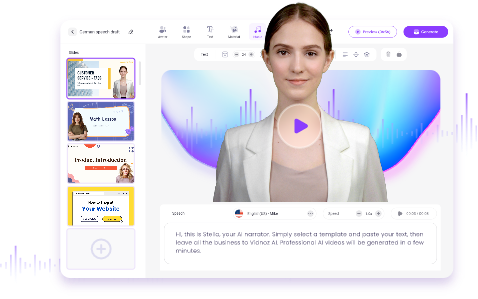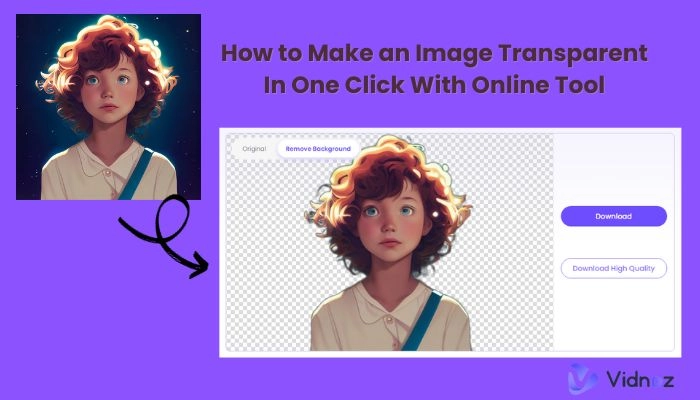Imagine your daily interactions with technology: asking Apple's Siri for the weather, instructing Google Home to play your favourite song, or even using Windows Cortana for assistance.While the popular voice assistants we know are widely used, AI voice recognition technology extends far beyond them. In this article, we will take a closer look at the world of AI voice recognition and explore its applications beyond virtual assistants. Additionally, we will unravel the complex process behind machines understanding and responding to human speech.
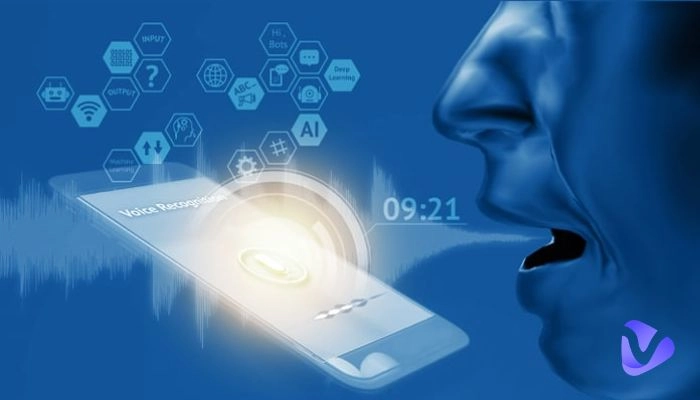
- On This Page
-
What’s AI Voice Recognition? How Does It Work?
-
AI Speaker Recognition vs. AI Speech Recognition, What’s the Difference?
-
Main Use Cases of Voice Recognition AI
-
4 Free AI Voice Recognition Tools Worth Trying
1. Microsoft Azure Speech to Text
3. IBM Watson Speech to Text
4. Vidnoz Flex Video to Text
-
Free AI-Powered Text-to-Speech Software
-
How Accurate Is AI in Voice Recognition? What’s the Challenge?
What’s AI Voice Recognition? How Does It Work?
AI voice recognition, also known as artificial intelligence voice recognition, is an innovative technology that combines artificial intelligence and natural language processing. It allows machines to not only capture but also understand and interpret spoken language with great precision.
This technology enables us to converse with machines in a more natural way, as if we were talking to another person. It has the ability to break down language barriers, facilitate voice-controlled interfaces, and revolutionize our daily interactions with technology. Artificial intelligence voice recognition software follows several crucial steps in its process:
1. Voice Recording/Input: One of the key components of this technology is voice recording or input. This process involves capturing audio from different sources like real people or other recorded sound clips.
2. Pre-processing: Pre-processing the captured audio involves removing background noise and cleaning up the audio to improve its quality.
3. Feature Extraction: Feature Extraction In this step, relevant features such as pitch, tone, and phonetic characteristics are extracted from the audio. These features provide important information for further analysis and processing.
4. Acoustic Modeling: AI models undergo training to recognize patterns in audio data, which helps create acoustic models representing various phonemes and words.
5. Language Modeling & Learning with AI: The system uses advanced language models and machine learning techniques to analyze the audio and comprehend its context. This allows it to generate precise transcriptions or provide voice responses with high accuracy.
6. Output Voice Response or Transcript It to Written Text: Finally, the AI system generates a voice response or converts the speech into written text.
Create Your AI Talking Avatar - FREE
- 1900+ realistic AI avatars of different races
- Vivid lip-syncing AI voices & gestures
- Support 140+ languages with multiple accents
AI Speaker Recognition vs. AI Speech Recognition, What’s the Difference?
There are two main directions within AI voice recognition: AI Speaker Recognition and AI Speech Recognition (ASR/STT). Let's take a closer look at their differences.
Supported Audio Source: AI Speaker Recognition is designed to specifically identify and verify human voices based on predetermined instructions. On the other hand, AI Speech Recognition is capable of converting audio to text and can process any type of voice.
Purpose: AI Speaker Recognition is primarily utilized for verifying authentication and identity, such as unlocking devices. In contrast, AI Speech Recognition is used to transcribe spoken words into written text, enabling voice assistants and transcription services.
Popularity: Currently, AI Speaker Recognition is commonly used for unlocking smartphones and smart home devices. On the other hand, AI Speech Recognition is more specialized and primarily employed in transcription services and voice assistants.
By understanding these distinctions, we can better appreciate the wide range of applications for AI voice recognition technology.
Turn Text into Video with AI - FREE
Generate high-quality videos from PDFs, PPTs, and URLs in one step!
Main Use Cases of Voice Recognition AI
Voice AI recognition technology finds applications in various domains, including:
- Virtual Assistants: Siri, Alexa, Google Assistant, and Cortana utilize AI voice recognition technology to respond and assist with voice commands.
- Enhancing Accessibility: AI Speaker Recognition technology improves interaction for individuals with disabilities by enabling voice-controlled devices.
- Voice Biometrics: Individual voices are utilized in applications, security systems, and criminal justice systems to verify identities and provide authentication.
Also Read: 5 Best AI Voice Changers to Customize Your Voice in Real-time >>
- Call Centers & Customer Services: It allows for self-service options, improving efficiency and enabling detailed call analytics.
- Transcription Services: AI is used in various industries including journalism, content creation, and healthcare to automatically convert spoken words into written text. This technology helps improve accessibility and streamline content creation processes.
- Digital Marketing: Search engines utilize AI voice recognition technology to enhance their understanding of user queries and deliver accurate and pertinent search results.
Voice recognition AI technology has proven to be a game-changer in multiple sectors, enhancing efficiency and accessibility. Let's take a look at some of tools that highlight its benefits.
4 Free AI Voice Recognition Tools Worth Trying
If you're interested in delving into the fascinating realm of AI voice recognition technology, there are a number of free tools that can provide an excellent entry point for your exploration. These tools provide valuable insights into the capabilities of voice recognition technology. They can transcribe spoken words and enhance productivity in different industries. Here are four notable options to consider:
1. Microsoft Azure Speech to Text
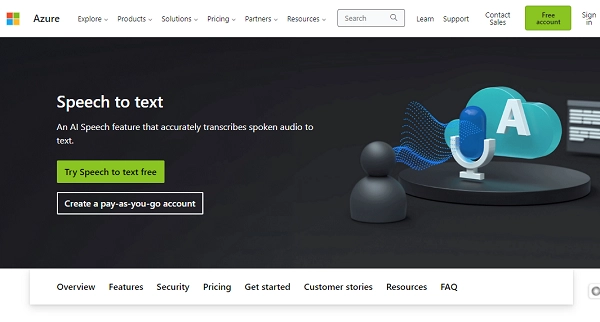
One recommended option for Speech to Text conversion is Microsoft Azure's service. Although it offers a $200 credit for the initial 30 days, it may be more suitable for developers and businesses familiar with complex tools. However, if you're looking for advanced features and customization options, this platform stands out. Azure Speech to Text provides highly accurate transcription of spoken language into written text. It supports various languages, making it a valuable choice for integrating voice recognition into applications or services.
2. Otter.ai
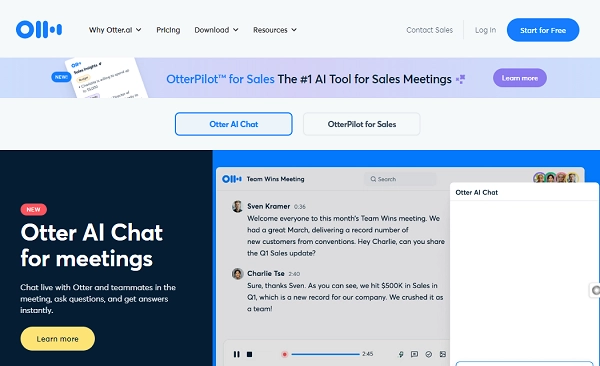
One great option for organizations and individuals looking to simplify the task of taking meeting notes through voice recognition is Otter.ai. Although it is tailored towards professional environments, there's also a free trial that individuals and teams can make use of.This tool is particularly effective at transcribing spoken conversations into written transcripts with great accuracy. It proves to be incredibly useful for enhancing documentation and collaboration in meetings or interviews.
Also Read: How to Record a Zoom Meeting without Permission >>
3. IBM Watson Speech to Text
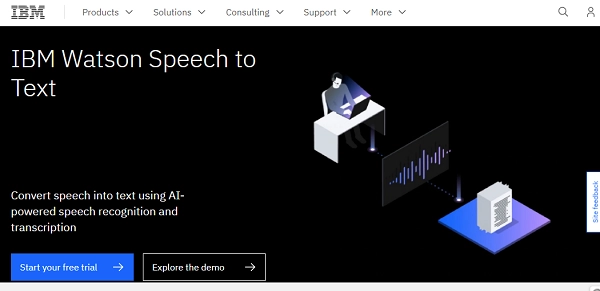
Another option for speech to text conversion is IBM Watson's Speech to Text service. They offer a free Lite version that allows 500 minutes of transcription per month. This tool is highly useful for converting audio into text and has many applications, including accessibility features, content creation, and data analysis. It is user-friendly and supports multiple languages, making it versatile for a variety of needs.
4. Vidnoz Flex Video to Text
Vidnoz Flex is a standout tool that offers a powerful Video to Text function. It excels in accurately transcribing videos and spoken language into text across multiple languages. With an impressive accuracy rate of 98.63%, it proves to be an invaluable asset for content creators, video editors, and anyone in need of precise transcription services. If you're looking for efficiency and accuracy in voice recognition technology, Vidnoz Flex is the standout choice.
Discover the possibilities of AI voice recognition using these free tools that offer a variety of features. Whether you need to transcribe audio, boost your productivity, or incorporate voice recognition into your projects, these tools serve as a reliable starting point for embracing this exciting technology. As you delve further into AI voice recognition, you'll uncover its numerous applications and witness how it transforms your work and interaction with audio content.
Free AI-Powered Text-to-Speech Software
After learning about AI speech recognition technology, don't you want to know how to convert text into natural speech? Look no further than Vidnoz free AI Text-to-Speech solution. This incredible tool supports multiple languages and allows you to effortlessly generate speech files from plain text. You can even customize the playback speed, ranging from half speed to one and a half times speed, making it perfect for your needs. And with both male and female voice options available, you have the flexibility to choose whichever suits your preferences best.
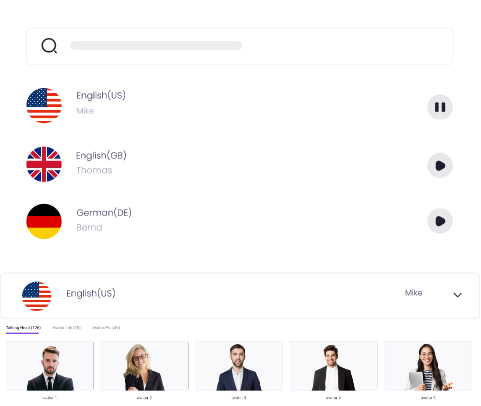
Create Text-to-Speech AI Voices - FREE
Make natural voice text to speech in various languages, accents,
and ethnicities. Try it free now!
If you're a content creator looking to add narration to your videos or if you need speech synthesis for accessibility purposes, Vidnoz's Text-to-Speech online tool is a valuable tool. It offers flexibility and ease of use, making it suitable for personal and professional applications. With this software, you can bring text to life through voice, enhancing your content effectively.
How Accurate Is AI in Voice Recognition? What’s the Challenge?
The accuracy of AI voice recognition varies between different systems and is influenced by the complexity of spoken language. Leading systems such as Siri and Alexa have achieved approximately 95-96% accuracy levels.
Despite advancements in AI in voice recognition technology, challenges still remain. These include issues with background noise, unclear speech, variations in speakers' voices, limited training data, and the requirement for more advanced natural language processing (NLP) algorithms and models. However, researchers continue to work towards achieving higher accuracy levels, leading to even more precise and versatile voice recognition technology in the future.
Conclusion
In the rapidly advancing field of technology, AI voice recognition has made substantial progress and is undeniably impacting our lives. This groundbreaking technology is transforming the way we interact with devices and access information, from virtual assistants to transcription services. As you delve into the realm of AI voice recognition, don't forget to explore the mentioned free tools, including Vidnoz's AI Text-to-Speech feature. Embrace the future of voice technology and discover the unparalleled convenience it brings to our everyday lives.


